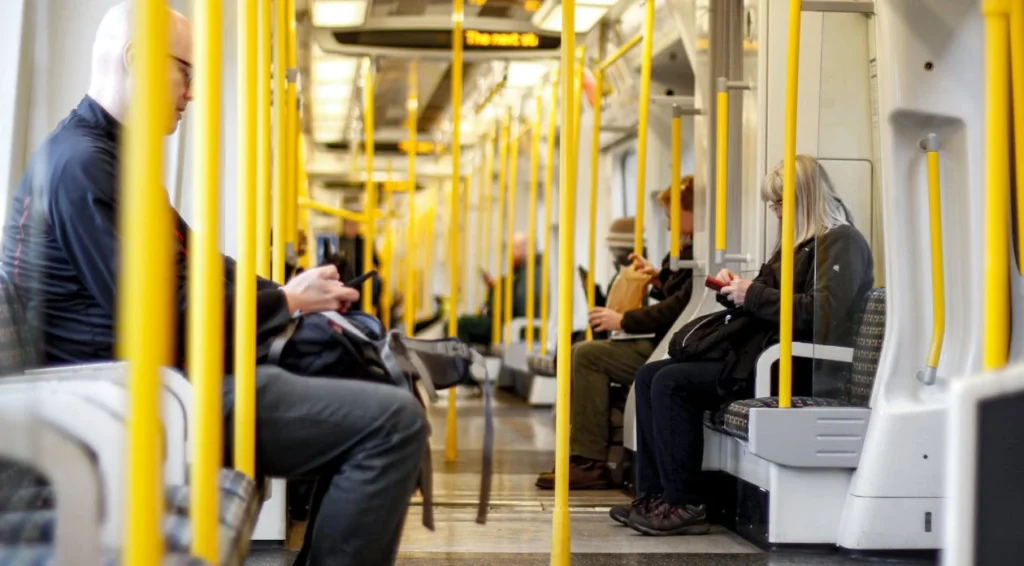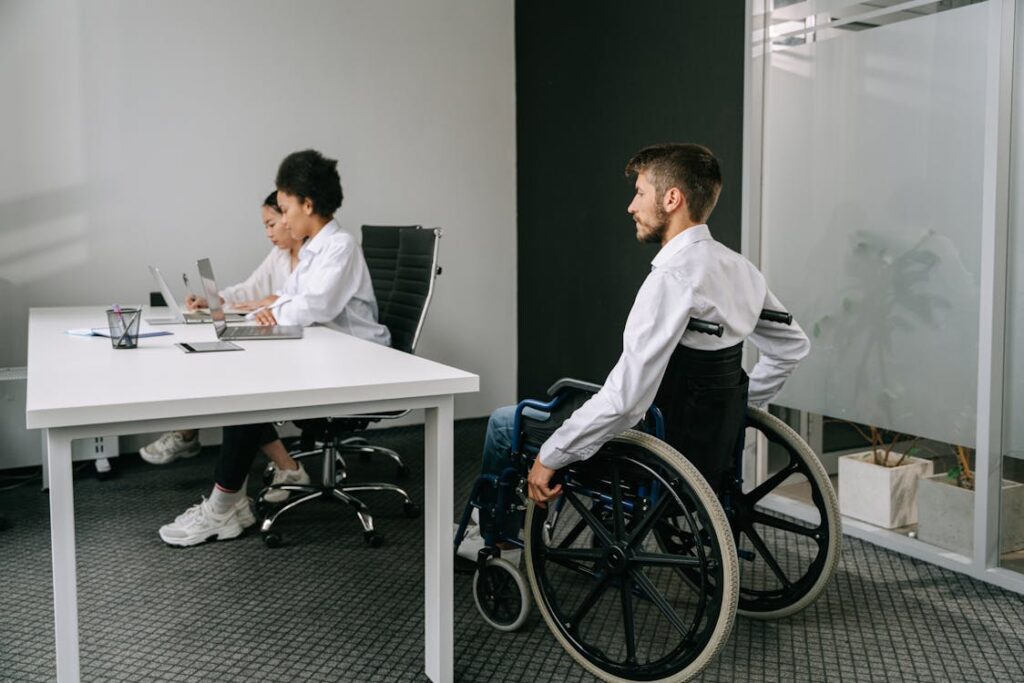Accessibility is not just a matter of convenience; it is a basic right. For millions of people with disabilities in India, daily life can be filled with challenges due to inaccessible public spaces, transportation, and workplaces. While laws exist to ensure inclusivity, awareness and enforcement remain key issues.
India has made significant progress in improving accessibility, especially with the Rights of Persons with Disabilities Act, 2016 (RPWD Act) and the Accessible India Campaign. These laws and initiatives aim to remove physical, technological, and social barriers so that people with disabilities can move freely, use public services without difficulty, and have equal opportunities at work.
Understanding accessibility laws can help disabled individuals, caregivers, and advocates ensure that rights are being upheld. It also holds institutions accountable, encouraging them to make the necessary changes.

Understanding Accessibility Laws in India
India has taken several steps to improve accessibility for people with disabilities through legal frameworks and government initiatives.
The most important law governing accessibility is the Rights of Persons with Disabilities (RPWD) Act, 2016, which replaced the earlier Persons with Disabilities (PWD) Act, 1995.
This law expands the definition of disability, strengthens enforcement mechanisms, and makes accessibility a legal obligation rather than a recommendation.
It mandates equal rights in education, employment, public transport, and social life, ensuring that people with disabilities can participate fully in society without unnecessary barriers.
Another key initiative is the Accessible India Campaign (Sugamya Bharat Abhiyan), launched in 2015 to make public spaces, transportation, and digital services more inclusive.
The campaign sets clear targets, such as ensuring that government buildings have ramps, elevators, and accessible restrooms, and making public transport more disability-friendly.
Despite these laws and initiatives, implementation remains inconsistent. While major cities have started making progress, rural areas and smaller towns often lag behind.
Many public buildings still lack proper ramps or elevators, buses remain difficult to board for wheelchair users, and workplaces do not always provide accommodations.
The challenge now is ensuring that these laws are enforced, and individuals are aware of their rights so they can demand accessibility improvements where needed.
Accessibility in Public Spaces
Public spaces are meant to be used by everyone, yet many remain inaccessible to people with disabilities.
The RPWD Act, 2016, makes it mandatory for public buildings, including government offices, hospitals, banks, and educational institutions, to be accessible. This includes installing ramps, elevators, accessible restrooms, and tactile paths for visually impaired individuals.
However, the reality on the ground is different. Many government offices have steep ramps without handrails, making them unsafe to use.
Elevators are often absent or out of order, and accessible restrooms are either locked or used for storage. Even newly constructed buildings sometimes fail to follow accessibility guidelines.
The law also requires places of recreation, such as parks, malls, movie theatres, and stadiums, to be accessible. This means providing wheelchair-friendly seating, ensuring ticket counters are at a reasonable height, and making sure entrances are wide enough for mobility aids.
Some newer malls and multiplexes have improved accessibility features, but older establishments remain difficult to navigate for wheelchair users and people with mobility impairments.
Religious sites, another important part of public life, often remain inaccessible. Many temples, mosques, and churches have steps at their entrances, with little effort made to provide alternative access.
Some religious institutions have taken steps to improve accessibility, but more work is needed to ensure equal access to all places of worship.
Enforcement of these rules falls under the responsibility of local government bodies and disability commissioners in each state.
If a public space is not accessible, individuals can file a complaint with the local authorities or the Chief Commissioner for Persons with Disabilities, who has the power to take action against non-compliant institutions.

Accessibility in Transportation
Transportation plays a crucial role in allowing people with disabilities to participate in society, whether for work, education, healthcare, or daily activities.
However, accessibility in public transport remains a major challenge in India. The Rights of Persons with Disabilities Act, 2016, requires all modes of public transport to be made accessible.
This includes buses, trains, metros, and airports. Despite these legal mandates, practical implementation varies widely across the country, with some cities making progress while others continue to neglect accessibility needs.
Public Buses and Metro Systems
Buses are the primary mode of transport for millions of Indians, but they remain largely inaccessible for people with disabilities. Many public buses still lack low floors, ramps, or designated wheelchair spaces.
Even in cities where low-floor buses are available, they often do not stop close enough to the curb, making it difficult for wheelchair users to board. Drivers and conductors are rarely trained to assist disabled passengers, further complicating accessibility.
Metro systems in cities like Delhi, Bengaluru, and Mumbai have made significant improvements in accessibility. Most metro stations now have elevators, ramps, and tactile paths for visually impaired passengers.
Many metro trains have designated wheelchair spaces and audio announcements for blind and low-vision passengers. However, issues such as broken elevators, unclear signage, and overcrowding still create barriers.
For those relying on autorickshaws or taxis, accessibility remains a major concern. While ride-hailing services have introduced wheelchair-friendly vehicles in some cities, their availability is still limited.
Standard auto-rickshaws and taxis often lack the space or modifications needed for disabled passengers to travel comfortably.
Railways and Long-Distance Travel
The Indian Railways is one of the largest transport networks in the world, but it remains highly inaccessible for disabled passengers. Although some railway stations have ramps and accessible restrooms, many still require passengers to navigate steep staircases.
While the government has introduced special coach compartments for disabled passengers, these are often located at the extreme ends of trains, making them difficult to reach. Additionally, platforms are frequently overcrowded, and assistance from railway staff is inconsistent.
The railway system does offer concessions for disabled passengers, including discounted fares and the option to book lower berths.
However, many passengers report difficulties in securing these benefits due to a lack of awareness among ticketing staff and technical issues with the online booking system.
Air travel has made better progress in terms of accessibility. Most airports now offer priority check-in, wheelchair assistance, and accessible restrooms.
Airlines are required to provide assistance to passengers with disabilities, but complaints about inadequate service, lost assistive devices, and inconsistent policies are still common.
Security checks at airports can also be challenging for individuals using prosthetic limbs, wheelchairs, or other assistive devices. Clearer guidelines and better-trained staff could significantly improve the experience for disabled travelers.
Legal Rights and Complaint Mechanisms
If a mode of public transport does not comply with accessibility requirements, passengers have the right to file a complaint.
The Chief Commissioner for Persons with Disabilities and the respective State Commissioners are responsible for ensuring that transport authorities follow accessibility guidelines.
Complaints can also be made to transport departments, metro rail corporations, and railway authorities.
Accessibility in transportation is not just about ramps and wheelchair access; it includes clear audio announcements for visually impaired passengers, sign language options for the hearing impaired, and well-trained staff who can assist when needed.
Until public transport systems fully integrate these elements, disabled passengers will continue to face difficulties in traveling independently.

Accessibility in Workplaces
Ensuring accessibility in workplaces is a crucial step toward empowering people with disabilities to achieve financial independence and career growth.
The Rights of Persons with Disabilities Act, 2016, mandates equal opportunities in employment, reasonable workplace accommodations, and a non-discriminatory environment.
While some companies have taken steps toward inclusivity, many workplaces in India still lack basic accessibility, preventing disabled individuals from fully participating in the workforce.
Legal Protections for Employees with Disabilities
The RPWD Act requires both private and public sector organizations to provide reasonable accommodations for employees with disabilities.
This means that workplaces must remove barriers that prevent employees from performing their duties effectively. These accommodations could include accessible office buildings, adaptive technology, flexible work hours, or remote work options.
Government jobs and public sector units are required to reserve 4% of their positions for persons with disabilities.
However, many disabled job seekers face challenges in securing these positions due to lack of awareness, biases in hiring, and limited accessible job portals. Private companies, while not legally required to reserve jobs, are encouraged to follow inclusive hiring practices.
If an employee faces discrimination or denial of reasonable accommodations, they have the right to file a complaint with the State Commissioner for Persons with Disabilities or the local labor department.
Many companies now have internal grievance redressal mechanisms, but enforcement of accessibility policies remains inconsistent.
Physical and Digital Accessibility in Offices
Workplace accessibility is not just about hiring policies; it also includes the physical environment. Office buildings should have ramps, elevators with braille buttons, accessible restrooms, and adequate space for wheelchair movement.
Many modern office spaces in metro cities have started implementing these features, but older buildings remain largely inaccessible.
For visually impaired employees, adaptive technology such as screen readers, braille keyboards, and magnification software can make work more manageable.
Hearing-impaired employees benefit from sign language interpreters, captioning services, and visual alerts in the workplace.
Digital accessibility is also essential, ensuring that company websites, internal portals, and communication platforms are designed to be inclusive for all employees.
Many organizations fail to consider these aspects, leaving disabled employees struggling to access work-related information. Government bodies and businesses that do not comply with accessibility norms risk penalties under the RPWD Act, but enforcement remains weak.
Creating an Inclusive Work Culture
Beyond physical accessibility, a truly inclusive workplace must foster an environment of respect and equal opportunity.
Employers and coworkers should be educated about disability inclusion, breaking stereotypes, and providing necessary support without making employees feel singled out.
Many companies now conduct sensitization training programs to create awareness and make the workplace more welcoming for disabled employees.
Organizations that prioritize accessibility and inclusion benefit from a diverse workforce with a range of perspectives and skills.
Providing mentorship programs, career advancement opportunities, and leadership roles for disabled employees helps ensure that accessibility is not just about compliance but about genuine empowerment.
Steps to Take if Your Workplace is Inaccessible
If you are an employee facing accessibility challenges at work, the first step is to raise the issue with the HR department or management.
Many companies are open to making accommodations when concerns are brought to their attention. If the problem persists, you can escalate the matter to the State Disability Commissioner, who has the authority to take action against non-compliant organizations.
Job seekers with disabilities should research whether a company has disability-friendly policies before applying.
Organizations recognized for their inclusive practices, such as Equal Opportunity Employers or disability-friendly workplaces, often publish their policies on their websites or job listings.
Accessibility in workplaces is essential for ensuring equal employment opportunities. While progress is being made, much work remains to be done to make Indian workplaces truly inclusive for everyone.

Enforcement and Accountability of Accessibility Laws
Laws and policies are only effective when they are properly enforced. While India has strong legal frameworks for accessibility, their implementation often falls short due to lack of awareness, poor monitoring, and weak enforcement mechanisms.
Ensuring that accessibility laws are followed requires a combination of government oversight, legal action, and active advocacy from disability rights organizations and individuals.
Role of Government Agencies
The primary responsibility for enforcing accessibility laws lies with the central and state governments.
The Rights of Persons with Disabilities Act, 2016, designates Chief Commissioners and State Commissioners for Persons with Disabilities to oversee implementation and address grievances.
These officials are responsible for ensuring that public buildings, transport systems, and workplaces comply with accessibility norms.
Government departments such as the Ministry of Social Justice and Empowerment and the Department of Empowerment of Persons with Disabilities (DEPwD) create policies and guidelines, but enforcement is often left to local authorities.
Many public buildings and transportation services continue to ignore accessibility requirements because of weak penalties and slow regulatory action.
The Accessible India Campaign (Sugamya Bharat Abhiyan) was launched in 2015 to speed up the process of making public spaces, transport, and information technology accessible.
However, many of its targets have not been met within the initial deadlines, highlighting the challenges of enforcement at a national level.
How to File a Complaint for Non-Compliance
If an individual encounters an accessibility issue in a public space, transport service, or workplace, they have the right to file a complaint.
Complaints related to public buildings or transportation should be submitted to the local municipal corporation, transport department, or district disability office.
For workplace-related issues, employees can first raise concerns with their HR department or internal grievance redressal committee.
If no action is taken, they can approach the State Commissioner for Persons with Disabilities, who has the authority to investigate and take corrective measures.
Legal complaints can also be filed with consumer courts or the judiciary if a government body or private entity consistently violates accessibility laws.
The High Court and Supreme Court of India have, in several cases, issued rulings in favor of disability rights, pushing for better enforcement of accessibility policies.
Role of Advocacy Groups and NGOs
Disability rights organizations play a significant role in holding institutions accountable and pushing for better implementation of accessibility laws.
Groups such as the National Centre for Promotion of Employment for Disabled People (NCPEDP) and Disability Rights India Foundation (DRIF) work to spread awareness, assist in legal battles, and lobby for stronger enforcement.
Many accessibility improvements in India have come as a result of legal petitions and public campaigns led by these organizations.
Individuals facing accessibility challenges can reach out to these groups for support in filing complaints, accessing legal resources, and advocating for systemic changes.
Challenges in Implementation
Despite legal mandates, accessibility improvements in India are often slow due to budget constraints, bureaucratic delays, and lack of technical expertise.
Many government buildings still lack ramps, transportation systems remain inaccessible, and workplaces fail to provide reasonable accommodations.
Public awareness is another major challenge. Many people, including government officials and business owners, do not fully understand the legal requirements for accessibility.
Training programs for policymakers, urban planners, and corporate leaders could significantly improve compliance with accessibility laws.
Without stricter monitoring and accountability measures, accessibility will remain an afterthought rather than a priority.
Strengthening enforcement, increasing penalties for non-compliance, and encouraging public participation in accessibility audits can help bridge the gap between policy and reality.

Enforcing Accessibility Laws and Filing Complaints
Despite the existence of strong accessibility laws in India, enforcement remains a challenge. Many public spaces, transport services, and workplaces still fail to meet accessibility standards, making it difficult for people with disabilities to live independently.
The lack of proper monitoring and accountability further delays progress. However, legal avenues exist for individuals to demand their rights and report violations. Knowing how to file complaints and escalate issues can help enforce accessibility laws more effectively.
Government Bodies Responsible for Accessibility
The Rights of Persons with Disabilities Act, 2016, places the responsibility of ensuring accessibility on various government agencies.
At the national level, the Chief Commissioner for Persons with Disabilities oversees the implementation of accessibility laws and addresses grievances.
Each state also has a State Commissioner for Persons with Disabilities, who handles complaints related to local accessibility violations.
Government departments that oversee specific areas, such as the Ministry of Urban Development for public spaces, the Ministry of Transport for accessible buses and trains, and the Ministry of Labor for workplace inclusivity, are also responsible for enforcing accessibility laws.
If a public facility is inaccessible, complaints can be filed with the relevant department to push for corrective action.
How to File a Complaint
If a public place, transport service, or workplace does not comply with accessibility laws, individuals can take action by submitting a formal complaint.
The first step is to contact the concerned authority, such as the local municipal office for public infrastructure or the transport department for inaccessible buses or railway stations.
Many government agencies have online portals where complaints can be submitted, making it easier to report violations.
For workplace accessibility issues, employees can raise concerns with their company’s human resources department.
If the issue is not resolved, a complaint can be filed with the State Disability Commissioner, who has the authority to investigate and take action against the employer.
If initial complaints do not lead to any response, the matter can be escalated to the Chief Commissioner for Persons with Disabilities.
This office is responsible for handling violations at a national level and can intervene if local authorities fail to act. Complaints can be sent via email, letter, or through official government websites.
Legal action is also an option for cases where accessibility rights are repeatedly denied. Disability rights organizations and legal aid groups can provide support in filing cases under the RPWD Act.
Courts have ruled in favor of accessibility in several landmark cases, setting legal precedents that reinforce the need for compliance.
The Role of NGOs and Disability Rights Activists
Non-governmental organizations play a vital role in holding institutions accountable for accessibility violations. Many NGOs work closely with disabled individuals to file complaints, conduct accessibility audits, and push for policy changes.
Organizations such as the National Centre for Promotion of Employment for Disabled People (NCPEDP) and Disability Rights India Foundation (DRIF) have been instrumental in advocating for better enforcement of accessibility laws.
Disability rights activists also use public awareness campaigns to highlight accessibility issues. Social media, petitions, and public interest litigation have helped bring attention to non-compliance cases and pressure authorities into making necessary changes.
Individuals who face accessibility challenges can reach out to these organizations for guidance and support in taking action.
Strengthening Accessibility Enforcement
For accessibility laws to be truly effective, enforcement mechanisms need to be strengthened. This includes better monitoring of public infrastructure projects, stricter penalties for non-compliance, and regular accessibility audits conducted by independent agencies.
Government bodies should also ensure that disabled individuals are actively involved in decision-making processes related to urban planning, transport, and workplace policies.
Public participation in accessibility advocacy is crucial. When more people report violations and demand better infrastructure, authorities are more likely to take action.
Awareness of accessibility rights and legal provisions empowers individuals to challenge barriers and push for a more inclusive society.

The Future of Accessibility in India
India has made progress in addressing accessibility challenges, but there is still a long way to go before the country becomes fully inclusive for people with disabilities.
While laws like the Rights of Persons with Disabilities Act, 2016, provide a strong foundation, their impact depends on proper implementation, enforcement, and public awareness.
The future of accessibility in India will be shaped by government policies, technological advancements, and continued advocacy from disability rights organizations.
The Role of Technology in Improving Accessibility
Technology has the power to bridge many accessibility gaps in India. Digital solutions such as screen readers, voice recognition software, and artificial intelligence-powered assistive devices are already making life easier for people with disabilities.
With the rapid expansion of smartphones and internet access, mobile applications can play a major role in providing real-time assistance for navigating public spaces, using transportation, and accessing government services.
Several Indian startups and research institutions are developing innovative assistive technologies. For example, smart prosthetics, speech-to-text applications, and wearable navigation devices for visually impaired individuals are becoming more common.
Government support for such innovations, through funding and policy incentives, will be crucial in making these solutions widely available and affordable.
Strengthening Accessibility in Rural Areas
While metropolitan cities have started making progress with accessible infrastructure, rural areas remain largely inaccessible for people with disabilities.
Many villages lack basic facilities such as ramps, proper roads, and accessible toilets. Public transport options in rural India are extremely limited, making it difficult for disabled individuals to travel for work, education, or healthcare.
Future accessibility initiatives must focus on bridging this urban-rural gap. Government programs should ensure that rural development projects include accessibility features, and funding should be allocated to make schools, healthcare centers, and public offices disability-friendly in smaller towns and villages.
Mobile healthcare and education services can also help bring essential services closer to people with disabilities in remote areas.
Policy Changes and Corporate Responsibility
Stronger government policies can significantly improve accessibility in the coming years. Stricter deadlines for making public spaces and transportation accessible, combined with higher penalties for non-compliance, can push institutions to take accessibility more seriously.
Regular audits and public reporting of accessibility improvements can create accountability and encourage faster implementation.
Corporations also have a role to play in shaping an inclusive future. Many multinational companies operating in India have accessibility policies that exceed Indian legal requirements, demonstrating that inclusive workplaces are both possible and beneficial.
If more companies adopt accessibility standards voluntarily, they can set an example for other organizations and industries. Encouraging corporate participation in accessibility initiatives through tax benefits and incentives can further promote inclusive business practices.
Changing Social Attitudes Toward Disability
Beyond legal and technological advancements, true accessibility requires a change in how society views disability. There is still a significant stigma surrounding disability in India, leading to social exclusion and lack of opportunities.
Public awareness campaigns, representation of disabled individuals in media, and inclusion in leadership roles can help shift perceptions and normalize disability as a part of everyday life.
Educational institutions play a critical role in this transformation. Schools and colleges should incorporate disability awareness programs to foster a more inclusive mindset among younger generations.
When students learn about accessibility from an early age, they grow up understanding the importance of creating an inclusive society.
Moving Toward a Barrier-Free India
The vision of a truly accessible India is achievable with collective effort. Governments, businesses, communities, and individuals must work together to remove physical, social, and economic barriers.
People with disabilities must be actively involved in decision-making processes, ensuring that accessibility policies and solutions truly reflect their needs.
Advocacy and public participation remain key drivers of change. Every complaint filed, every accessibility audit conducted, and every discussion on disability rights helps push the country toward a more inclusive future.
By continuing to demand better enforcement of laws, supporting technological advancements, and fostering a culture of inclusion, India can move closer to becoming a barrier-free nation where everyone has the opportunity to live with dignity and independence.
Conclusion
India has made significant strides in improving accessibility through legal frameworks like the Rights of Persons with Disabilities Act, 2016, and initiatives like the Accessible India Campaign. However, the true impact of these efforts depends on proper enforcement, increased awareness, and proactive implementation. Public spaces, transport systems, and workplaces still have major accessibility gaps that need urgent attention.
Technology and corporate responsibility can accelerate progress, but lasting change requires a shift in societal attitudes. An inclusive mindset, combined with stricter policies and better infrastructure, will create an environment where people with disabilities can live, work, and travel without barriers.
The journey toward a fully accessible India is ongoing, but every step forward counts. By raising awareness, holding institutions accountable, and embracing innovation, we can build a society where accessibility is not an afterthought but a fundamental right. The responsibility lies with governments, businesses, and individuals alike to ensure that no one is left behind.
If you or someone you know is seeking solutions for mobility and independence, Robobionics is here to help. Our advanced prosthetic solutions, like Grippy™, are designed to empower individuals with disabilities. Contact us today to learn more!



